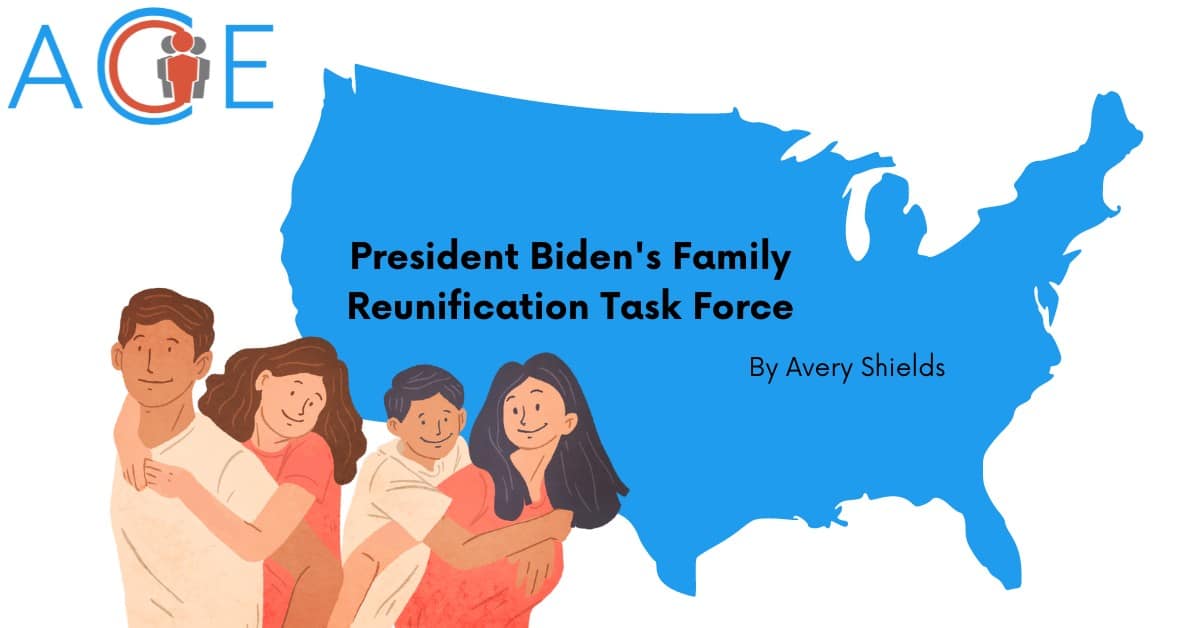Background
Beginning in May 2018, President Trump enacted an immigration strategy referred to as “Zero Tolerance Policy,” referring to the prevention of illegal border crossings at the U.S.-Mexico border. The new policy required Department of Homeland Security (DHS) officials to prosecute individuals illegally crossing the border as well as those who came to the border in request for asylum. What resulted was the separation and detention of several thousand migrant children at the border and the deportation of all adult migrants including the parents and guardians of the children. This forced separation has been widely criticized by policymakers, other nations, and humanitarian organizations.
What is the Family Reunification Task Force?
About 2,000 children were reunited with their families before the end of President Trump’s term in office. However, given varied access to services like internet and phone use and the limited capacity of nonprofit organizations, several thousand children remained at the U.S.-Mexico border by 2021. As a result, President Biden announced “The President’s Interagency Task Force on the Reunification of Families.” This task force would utilize the combined efforts of the Department of Homeland Security, the Department of State, the Department of Health and Human Services, and the Department of Justice, as well as migrant rights organizations.
The President’s Task Force created a website allowing deported parents to contact the federal government to be reunited with their children. The website, Together.gov, allows parents to register for support services that may grant parents the ability to travel to the United States for a maximum of 3 years to reunite with their lost children under “humanitarian parole” status. A concern for migrants may be that they do not wish to provide their personal information to a U.S. government website given that the Together.gov site states that, “…information may be shared with national security and law enforcement agencies, including ICE and Customs and Border Protection…”. Many see this as a deterrent for families who may wish to reunite with their children but do not want their information to be on file with Immigration and Customs Enforcement (ICE).
The Family Reunification Task Force publishes progress reports to update the public. According to the May 2022 report, the Task Force has registered 1,344 families for special services. Among these, 260 families have been reunified, and 329 are receiving assistance from the government. The Task Force is projected to end in September 2022. It is unclear whether the organization will be able to reunify all the families separated by the Zero Tolerance Policy by this deadline.
Critiques of the Task Force
Several Republican Congresspeople have made remarks about Biden’s handling of the Family Reunification process. Senator Ted Cruz (R-TX) argued that allowing guardians to obtain lawful presence in the United States to reunite with their children goes against the typical practice for those previously expelled for illegal border crossing. Specifically, Cruz took issue with the phrasing “household members” by arguing it suggests non-family members may be admitted into the U.S. under Biden’s Task Force. Cruz’s stance echoes several other politicians’ views that the Department of Homeland Security should not make exceptions to laws that prevent illegal migrants from reentering the nation for 5 to 20 years following their deportation.
Border patrol and DHS officials have also been critical of the Task Force. In an interview with NPR, National Homeland Security Secretary Alejandro Mayorkas noted that many border personnel feel the plan does not do enough to support the children still detained at the border and the staff in charge of their well-being. Mayorkas relays the sentiment that the Department of Homeland Security needs more and better equipment and increased personnel to care for these children. Many border security agents have also complained of the Biden administration’s reluctance to increase border security which makes their work increasingly difficult.



